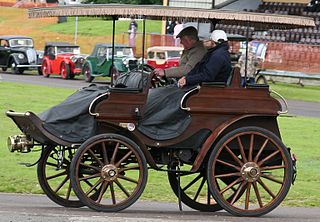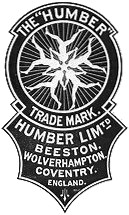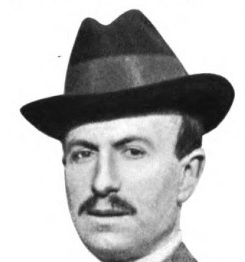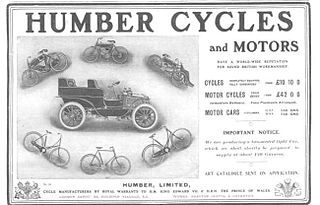
An antique car is an automobile that is an antique. Narrower definitions vary based on how old a car must be to qualify. The Antique Automobile Club of America defines an antique car as over 25 years of age. However, the legal definitions for the purpose of antique vehicle registration vary widely. The antique car era includes the Veteran era, the Brass era, and the Vintage era, which range from the beginning of the automobile up to the 1930s. Later cars are often described as classic cars. In original or originally restored condition antiques are very valuable and are usually either protected and stored or exhibited in car shows but are very rarely driven.

Horseless carriage is an early name for the motor car or automobile. Prior to the invention of the motor car, carriages were usually pulled by animals, typically horses. The term can be compared to other transitional terms, such as wireless phone. These are cases in which a new technology is compared to an older one by describing what the new one does not have.

The Brass Era is an American term for the early period of automotive manufacturing, named for the prominent brass fittings used during this time for such features as lights and radiators. It is generally considered to encompass 1896 through 1915, a time when cars were often referred to as horseless carriages.

Arrol-Johnston was an early Scottish manufacturer of automobiles, which operated from 1895 to 1931 and produced the first automobile manufactured in Britain. The company also developed the world's first "off-road" vehicle for the Egyptian government, and another designed to travel on ice and snow for Ernest Shackleton's Nimrod Expedition to the South Pole.

L'Aster, Aster, Ateliers de Construction Mecanique l'Aster, was a French manufacturer of automobiles and the leading supplier of engines to other manufacturers from the late 1890s until circa 1910/12. Although primarily known as an engine mass manufacturer the company also produced chassis for coach-works and a complete range of components.

Humber Limited was a British manufacturer of bicycles, motorcycles, and cars incorporated and listed on the stock exchange in 1887. It took the name "Humber & Co Limited" because of the high reputation of the products of one of the constituent businesses that had belonged to Thomas Humber. A financial reconstruction in 1899 transferred its business to Humber Limited.
The Garrard was an English automobile manufactured only in 1904 by Garrard Co. of Birmingham run by Charles Garrard.

Single Center Spring Buggy Company was an American carriage and automobile manufacturer based in Evansville, Indiana. The Single Center factory manufactured the Zentmobile, Zent, Windsor, Worth, Single Center, Evansville, Simplicity and Traveler automobiles from 1903 to 1910.

Henry John Lawson, also known as Harry Lawson, was a British bicycle designer, racing cyclist, motor industry pioneer, and fraudster. As part of his attempt to create and control a British motor industry Lawson formed and co floated The Daimler Motor Company Limited in London in 1896. It later began manufacture in Coventry. Lawson organised the 1896 Emancipation Day drive now commemorated annually by the London to Brighton Veteran Car Run on the same course.

Frederick Richard Simms was a British mechanical engineer, businessman, prolific inventor and motor industry pioneer. Simms coined the words "petrol" and "motorcar". He founded the Royal Automobile Club, and the Society of Motor Manufacturers and Traders.
Spaulding was used as an automobile marque by two separate companies. The Spaulding Automobile and Motor Company of Buffalo, New York built Veteran Era automobiles in 1902 and 1903. Spaulding Manufacturing Company of Grinnell, Iowa built Brass Era automobiles from 1910 to 1916.

Humber is an English brand of bicycle. Thomas Humber made himself a velocipede in 1868. From that time he built a substantial business in manufacturing tricycles and bicycles while continuously improving their design and construction. His products were so well-made and well-designed they were known as "the aristocrat among bicycles".

The Riker was a veteran and brass era electric car founded in 1898 in Elizabeth, New Jersey. Designed by Andrew L. Riker, they were built in small numbers until the company was absorbed by the Electric Vehicle Company in 1901.

The Gladiator Cycle Company, Clément-Gladiator, was a French manufacturer of bicycles, motorcycles and cars based in Le Pré-Saint-Gervais, Seine.

Humber Limited was a pioneering British motorcycle manufacturer. Humber produced the first practical motorcycle made in Britain by fitting one of their Humber bicycles with an E. J. Pennington two-horsepower motor in 1896.

Gustave Adolphe Clément, from 1909 Clément-Bayard, was a French entrepreneur. An orphan who became a blacksmith and a Compagnon du Tour de France, he went on to race and manufacture bicycles, pneumatic tyres, motorcycles, automobiles, aeroplanes and airships.

Clément-Talbot Limited was a British motor vehicle manufacturer with its works in Ladbroke Grove, North Kensington, London, founded in 1903. The new business's capital was arranged by Charles Chetwynd-Talbot, shareholders included automobile manufacturer, Adolphe Clément, along with Baron Auguste Lucas and Emile Lamberjack, all of France.

The Coventry Motor Company or CMC was a Coventry motor vehicle manufacturer established in early 1896 by H J Lawson's secretary Charles McRobie Turrell (1875–1923) as a subsidiary of Lawson's British Motor Syndicate.

The Great Horseless Carriage Company Limited was formed in May 1896 with a capital of £750,000 in shares of £10 each "of which £250,0000 was for working capital". The company was formed to carry on the horseless carriage industry in England and works with railway and canal adjoining were secured at Coventry. The rights that were purchased had little lasting value and after a number of financial reconstructions beginning in 1898 all activities were terminated by 1910.

The British Motor Syndicate Limited (BMS) was a company formed in November 1895 by company promoter and entrepreneur Harry John Lawson. Lawson's aim was to use BMS to raise funds from the public to establish a business with a monopoly on petrol-driven cars by acquiring as many patents as possible related to such vehicles from Gottlieb Daimler, his business associates, and other sources.



















